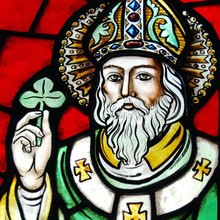The History of St. Patrick’s Day

March 17, 2016
Around the world, March 17th has been adopted as a holiday for themed parties, lots of green clothes, and parades. Everyone knows about the little leprechauns at the end of the rainbow and the constant threat of being unfairly pinched unless you’re covered head-to-toe in green. But the actual history of the silly, seemingly meaningless holiday goes much deeper than a pot of gold and four leaf clovers.
St. Patrick’s is celebrated on March 17th, a day remembered as the namesake’s feast and anniversary of his death. Even though the holiday originates in Ireland, the original Saint Patrick wasn’t even Irish – he was English. He was born in the British Isles in 350 A.D., and at sixteen years old, he was kidnapped. Patrick was taken to Ireland, where he was sold into slavery and worked as a shepherd (herding goats, hopefully). Eventually, he escaped to a monastery in France, only to return to Ireland over a decade later to convert others to Christianity.
Since then, Saint Patrick was adopted as the patron of Ireland. For thousands of years, the Irish have celebrated in his name. The custom of wearing green is because it’s said that he used a shamrock (a green three-leaved clover) to explain the Holy Trinity to the people of Ireland. The tradition was passed through generations and eventually spread to other countries.
The first St. Patrick’s Day parade was held in 1762. Around this time, almost a million Irish immigrants had left for other countries because of the Great Potato Famine (a history lesson for another time). Facing discrimination because of their backgrounds, Irish-Americans found unity and remembered their heritage through these festivals.
As for the pinching custom, the tradition was made popular by Irish immigrants. The belief was that wearing the color green hid a person from leprechauns, who pinched anyone they could see. It became a reminder that a leprechaun could sneak up on anyone they could.
Happy St. Patrick’s Day from the Talon!





